Abstract
The relative agglutinin responses to various single O-antigenic (Kauffmann-White) factors were measured after immunization of rabbits with several strains of heat-killed salmonella organisms. As expected, the relative strength of the responses to the various O factors was quite varied and in some cases depended on the presence or absence of other single factors. For example, antibodies to factor 122 were formed rapidly and to extremely high levels in rabbits immunized with either Salmonella typhi (O 9,121,122,123) or S. paratyphi B (O 1,4,5,121,122), whereas factor 123 in S. typhi and factor 1 in S. paratyphi B induced only minimal responses. However, rabbits immunized with S. paratyphi A var. durazzo (O 2,121,123), which lacks factor 122, produced high levels of agglutinins to the 123 antigenic determinant. In general, most of the agglutinin responses to the various single factors measured were formed in parallel, but there were several exceptions. For instance, the responses to factors 4 and 5 were relatively strong in rabbits receiving three graded doses of S. paratyphi B. However, agglutinins to factor 4 did not appear until after the second injection, and not at all in rabbits given the full amount of antigen in one injection. In contrast, antibodies to factor 4 were formed rapidly in rabbits receiving three graded doses of a strain of S. typhimurium (O 1,4,12) lacking factor 5. Good overall agreement was obtained between agglutination and hemagglutination assays of antibodies, as demonstrated by the responses to the various O factors of S. friedenau. It was concluded that measurement of the antibody responses to the various single-factor O antigens throughout the immunization program was necessary for effective evaluation of the relative significance of these factors in antibody formation against intact bacteria.
Full text
PDF

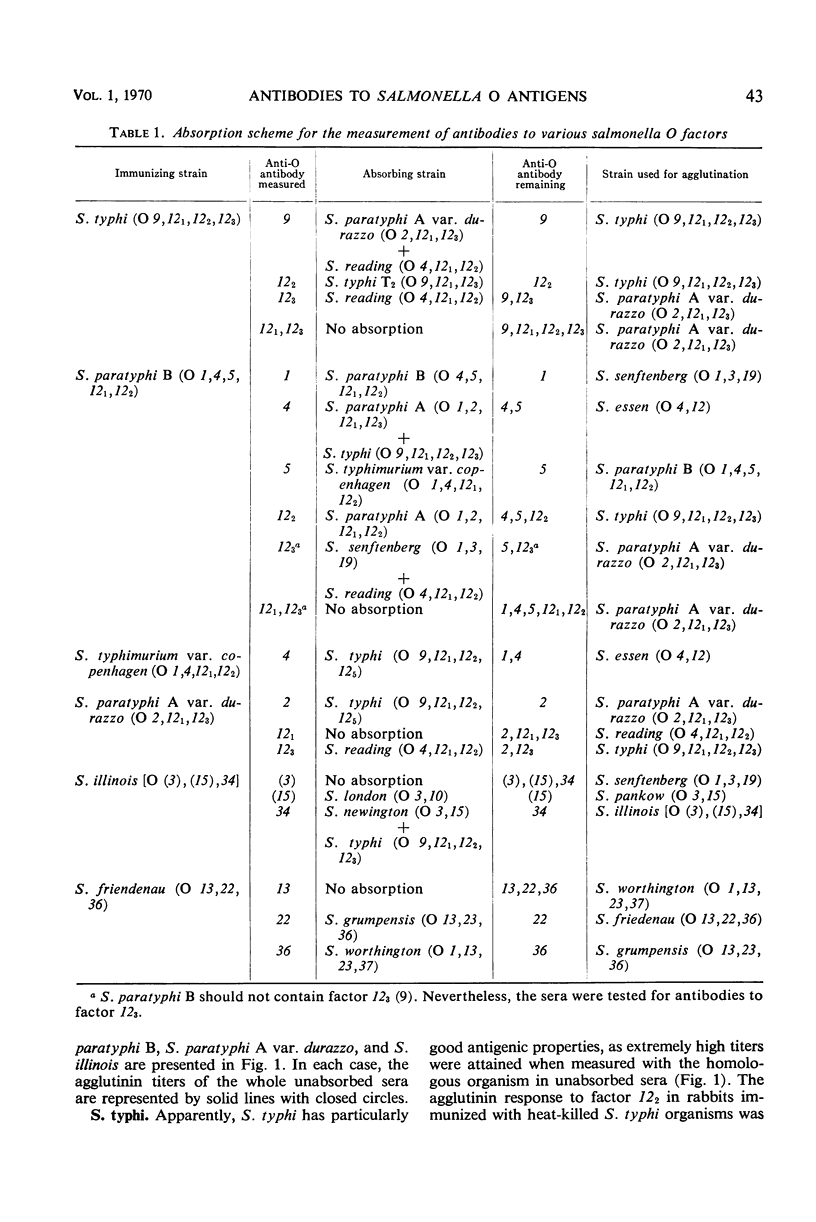
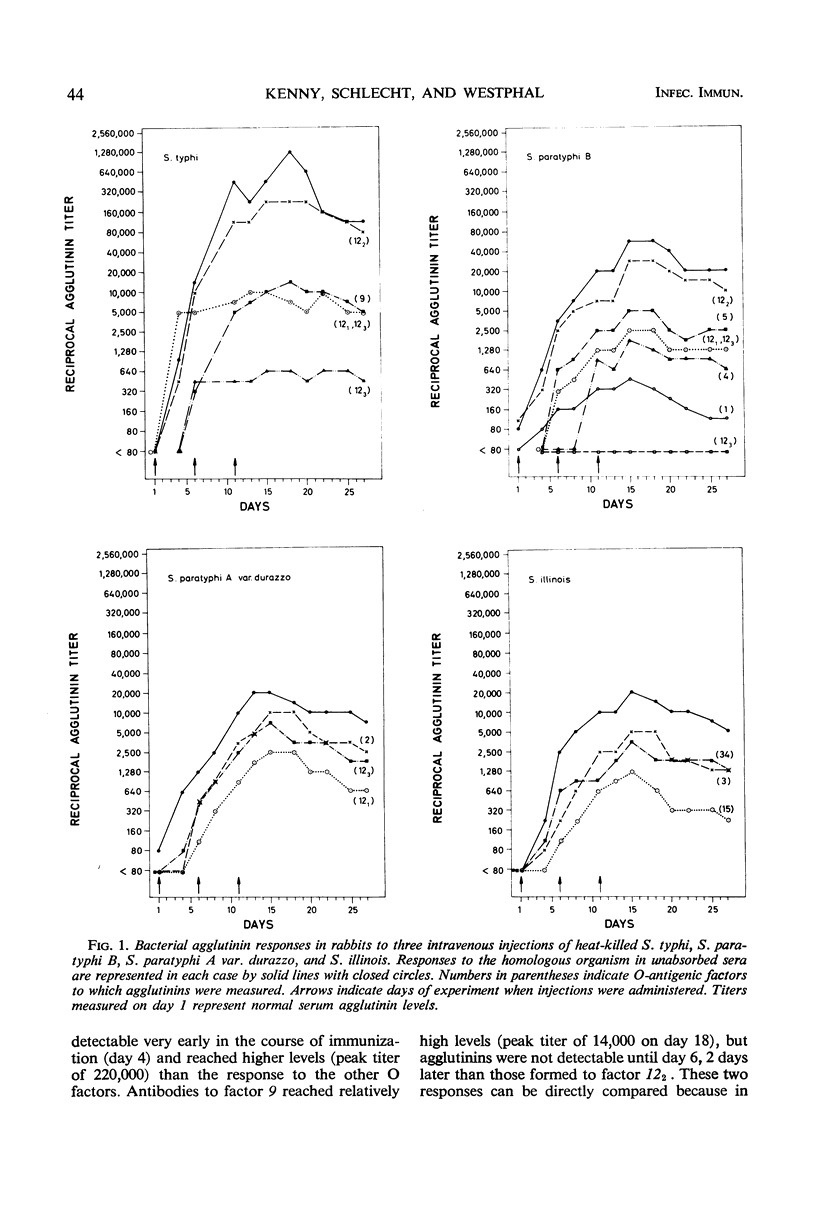
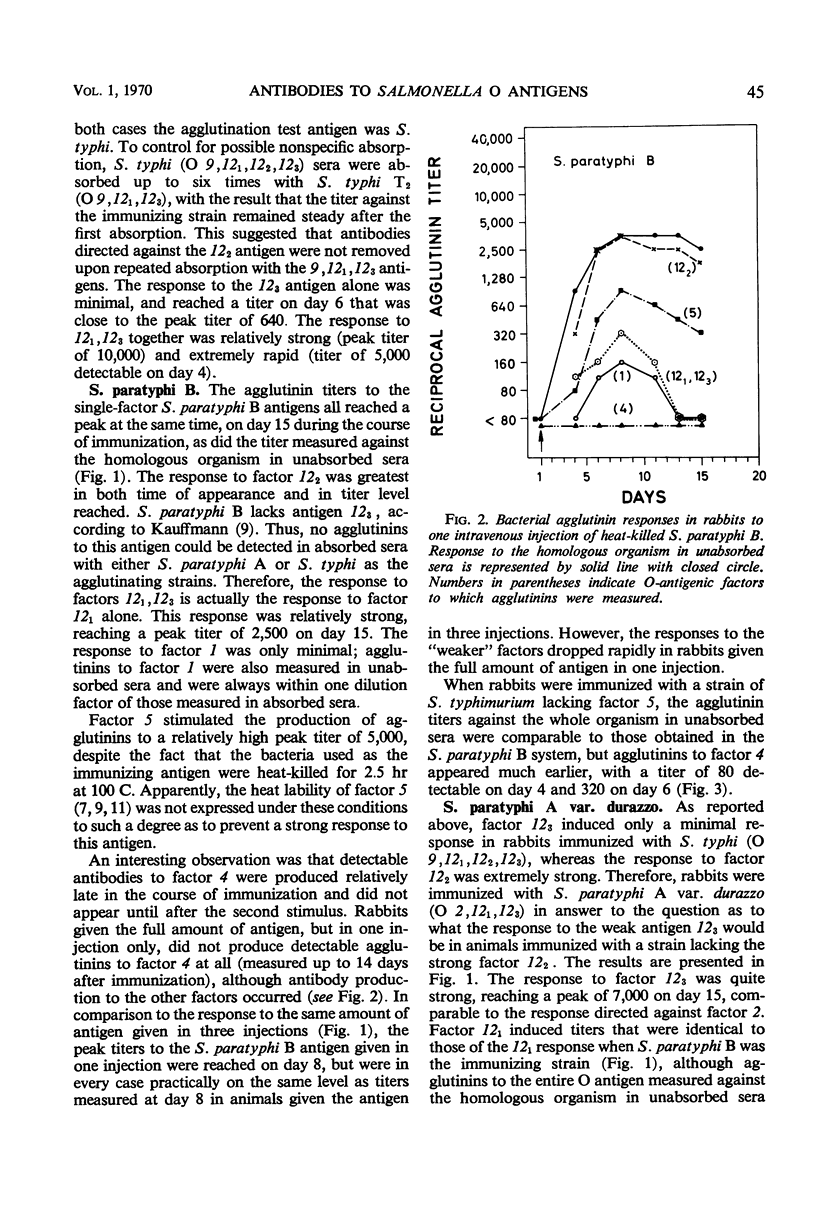
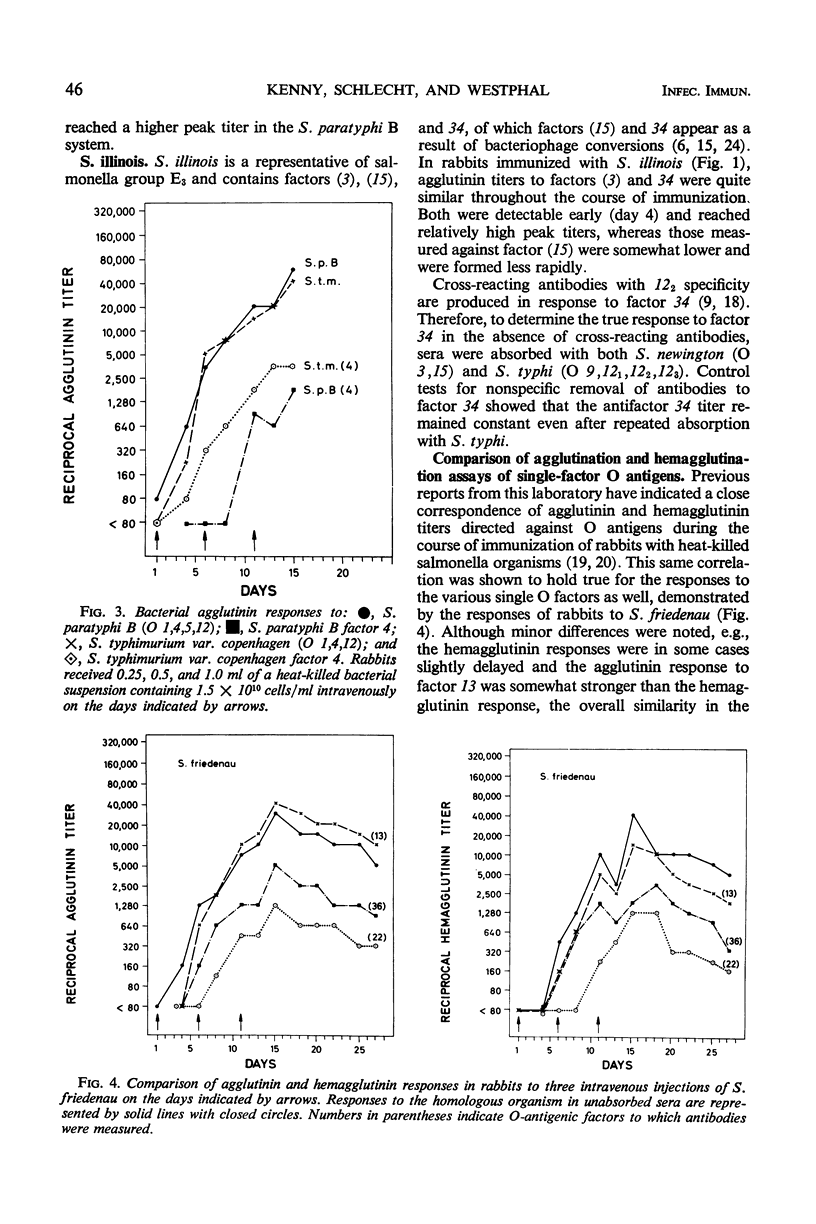
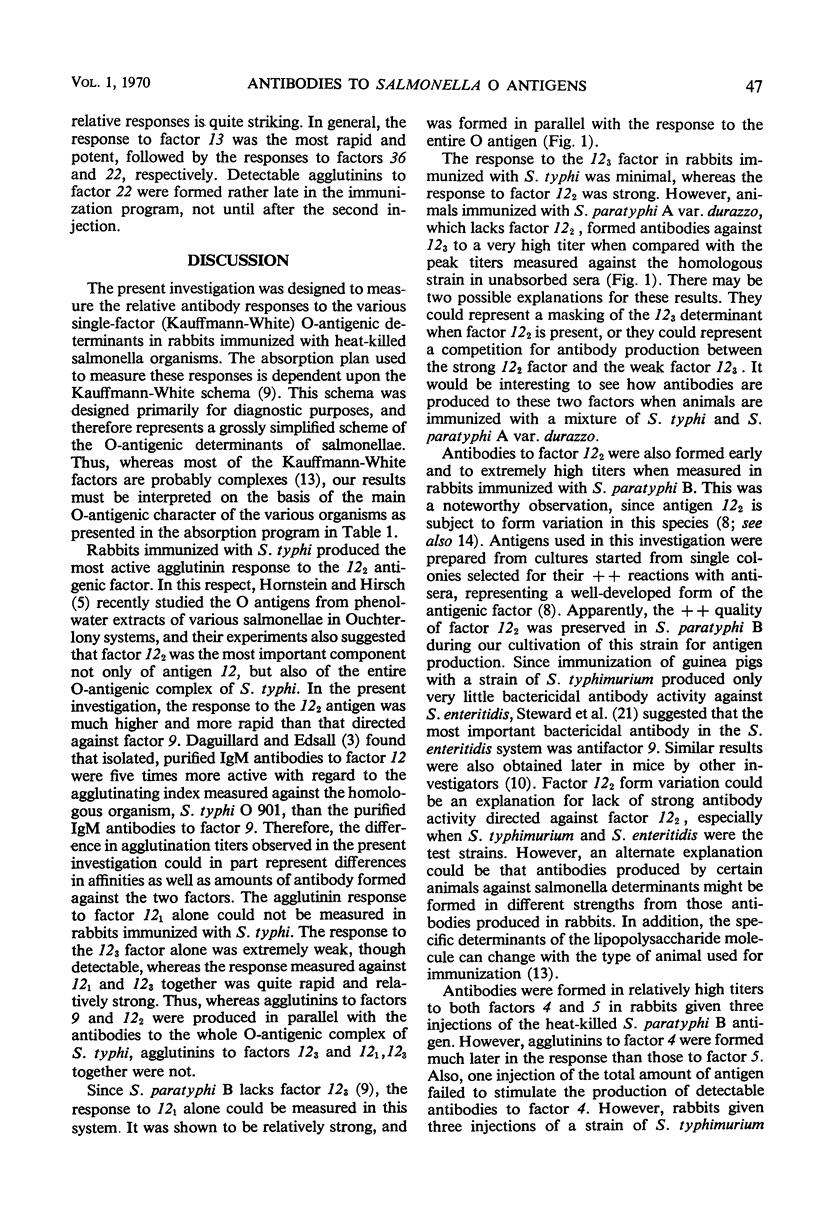

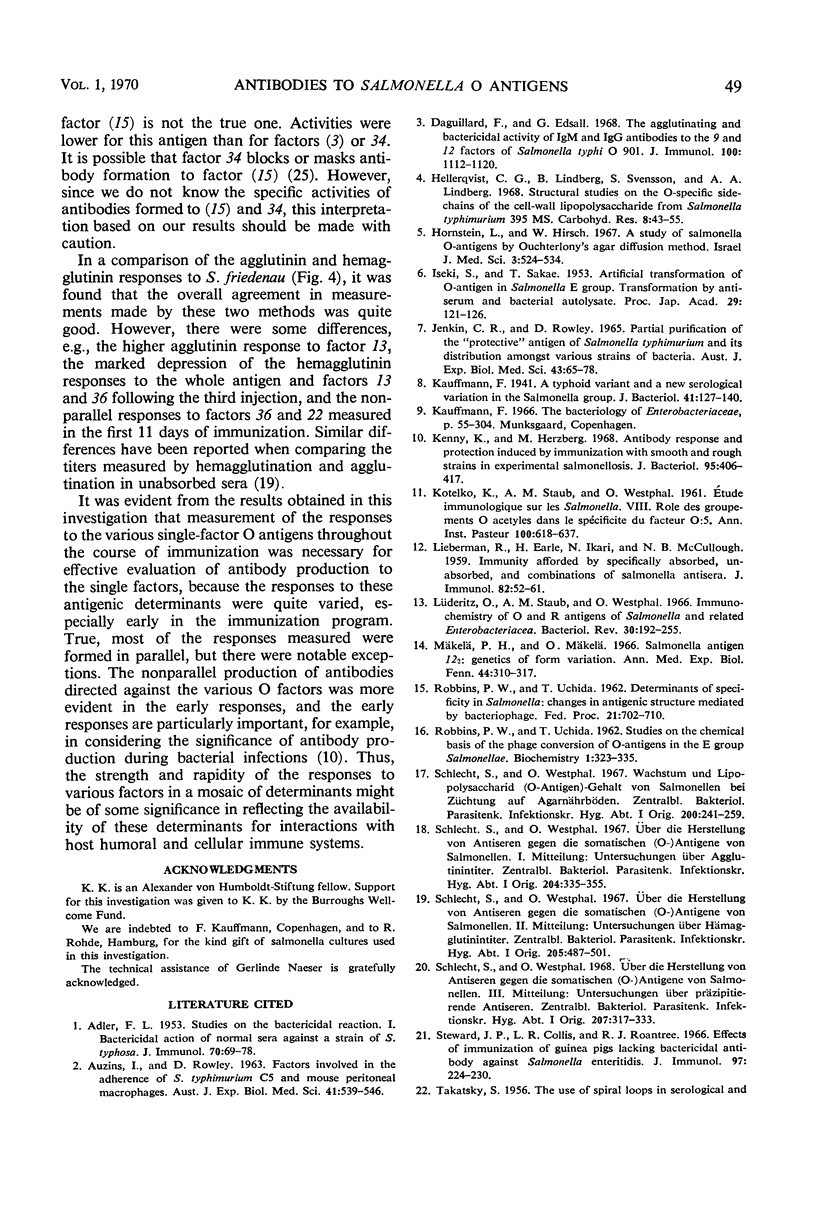
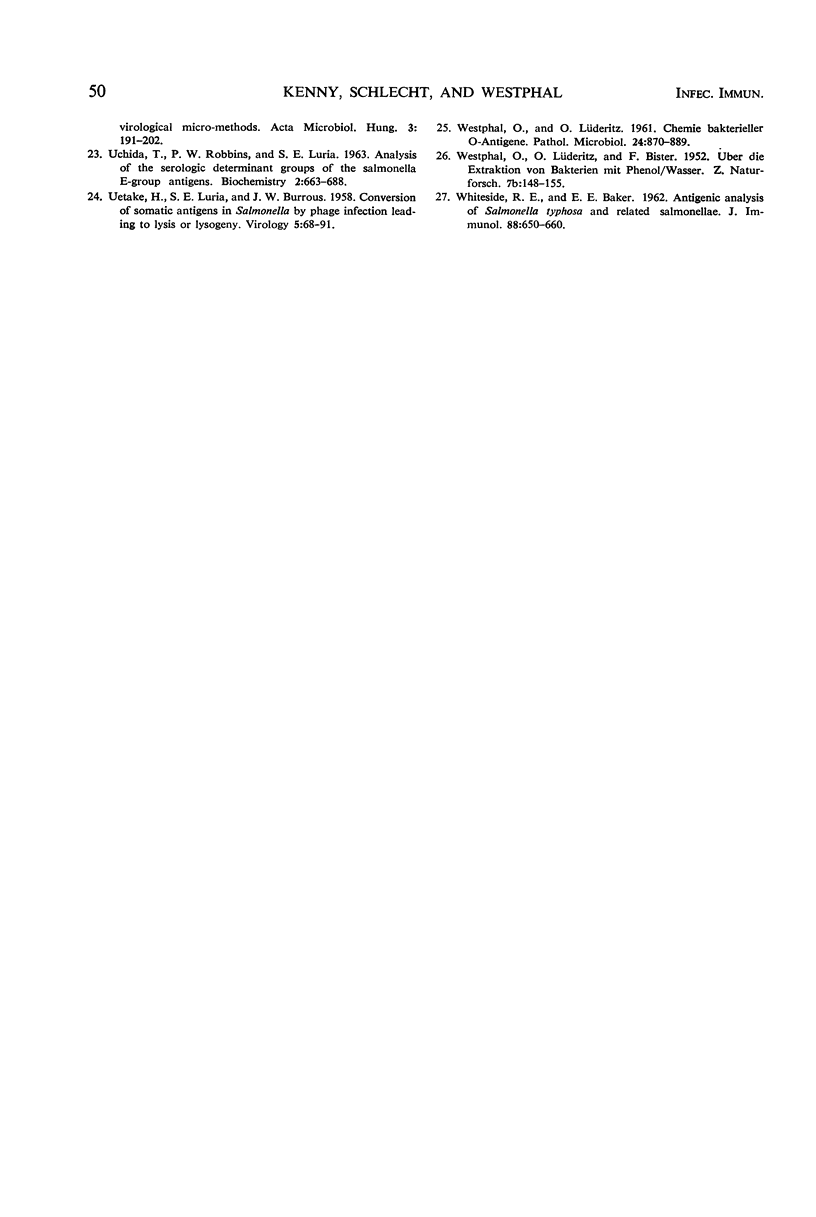
Selected References
These references are in PubMed. This may not be the complete list of references from this article.
- ADLER F. L. Studies on the bactericidal reaction. I. Bactericidal action of normal sera against a strain of Salmonella typhosa. J Immunol. 1953 Jan;70(1):69–78. [PubMed] [Google Scholar]
- AUZINS I., ROWLEY D. FACTORS INVOLVED IN THE ADHERENCE OF S. TYPHIMURIUM C5 AND MOUSE PERITONEAL MACROPHAGES. Aust J Exp Biol Med Sci. 1963 Oct;41:539–546. doi: 10.1038/icb.1963.44. [DOI] [PubMed] [Google Scholar]
- Daguillard F., Edsall G. The agglutinating and bactericidal activity of IgM and IgG antibodies to the 9 and 12 factors of Salmonella typhi O 901. J Immunol. 1968 May;100(5):1112–1120. [PubMed] [Google Scholar]
- Hornstein L., Hirsch W. A study of Salmonella O antigens by Ouchterlony's agar diffusion method. Isr J Med Sci. 1967 Jul-Aug;3(4):524–534. [PubMed] [Google Scholar]
- JENKIN C. R., ROWLEY D. PARTIAL PURIFICATION OF THE "PROTECTIVE" ANTIGEN OF SALMONELLA TYPHIMURIUM AND ITS DISTRIBUTION AMONGST VARIOUS STRAINS OF BACTERIA. Aust J Exp Biol Med Sci. 1965 Feb;43:65–78. doi: 10.1038/icb.1965.5. [DOI] [PubMed] [Google Scholar]
- KOTELKO K., STAUB A. M., TINELLI R. [Immunochemical study on Salmonella. VIII. Role of O acetyl groupings in the specificity of the O:5 factor]. Ann Inst Pasteur (Paris) 1961 May;100:618–637. [PubMed] [Google Scholar]
- Kauffmann F. A Typhoid Variant and a New Serological Variation in the Salmonella Group. J Bacteriol. 1941 Feb;41(2):127–140. doi: 10.1128/jb.41.2.127-140.1941. [DOI] [PMC free article] [PubMed] [Google Scholar]
- Kenny K., Herzberg M. Antibody response and protection induced by immunization with smooth and rough strains in experimental salmonellosis. J Bacteriol. 1968 Feb;95(2):406–417. doi: 10.1128/jb.95.2.406-417.1968. [DOI] [PMC free article] [PubMed] [Google Scholar]
- LIEBERMAN R., EARLE H., IKARI N., McCULLOUGH N. B. Immunity afforded by specifically absorbed, unabsorbed and combinations of Salmonella antisera. J Immunol. 1959 Jan;82(1):52–61. [PubMed] [Google Scholar]
- Lüderitz O., Staub A. M., Westphal O. Immunochemistry of O and R antigens of Salmonella and related Enterobacteriaceae. Bacteriol Rev. 1966 Mar;30(1):192–255. doi: 10.1128/br.30.1.192-255.1966. [DOI] [PMC free article] [PubMed] [Google Scholar]
- ROBBINS P. W., UCHIDA T. Determinants of specificity in Salmonella: changes in antigenic structure mediated by bacteriophage. Fed Proc. 1962 Jul-Aug;21:702–710. [PubMed] [Google Scholar]
- ROBBINS P. W., UCHIDA T. Studies on the chemical basis of the phage conversion of O-antigens in the E-group Salmonellae. Biochemistry. 1962 Mar;1:323–335. doi: 10.1021/bi00908a020. [DOI] [PubMed] [Google Scholar]
- Schlecht S., Westphal O. Uber die Herstellung von Antiseren gegen die somatischen (O)-Antigene von Salmonellen. 3. Untersuchungen über präzipitierende Antiseren. Zentralbl Bakteriol Orig. 1968;207(3):317–333. [PubMed] [Google Scholar]
- Schlecht S., Westphal O. Wachstum und Lipopolysaccharid (O-Antigen)-Gehalt von Salmonellen bei Züchtung auf Agarnährböden. Zentralbl Bakteriol Orig. 1966 Jun;200(2):241–259. [PubMed] [Google Scholar]
- Steward J. P., Collis L. R., Roantree R. J. Effects of immunization of guinea pigs lacking bactericidal antibody against Salmonella enteritidis. J Immunol. 1966 Aug;97(2):224–230. [PubMed] [Google Scholar]
- UCHIDA T., ROBBINS P. W., LURIA S. E. ANALYSIS OF THE SEROLOGIC DETERMINANT GROUPS OF THE SALMONELLA E-GROUP O-ANTIGENS. Biochemistry. 1963 Jul-Aug;2:663–668. doi: 10.1021/bi00904a008. [DOI] [PubMed] [Google Scholar]
- UETAKE H., LURIA S. E., BURROUS J. W. Conversion of somatic antigens in Salmonella by phage infection leading to lysis or lysogeny. Virology. 1958 Feb;5(1):68–91. doi: 10.1016/0042-6822(58)90006-0. [DOI] [PubMed] [Google Scholar]


